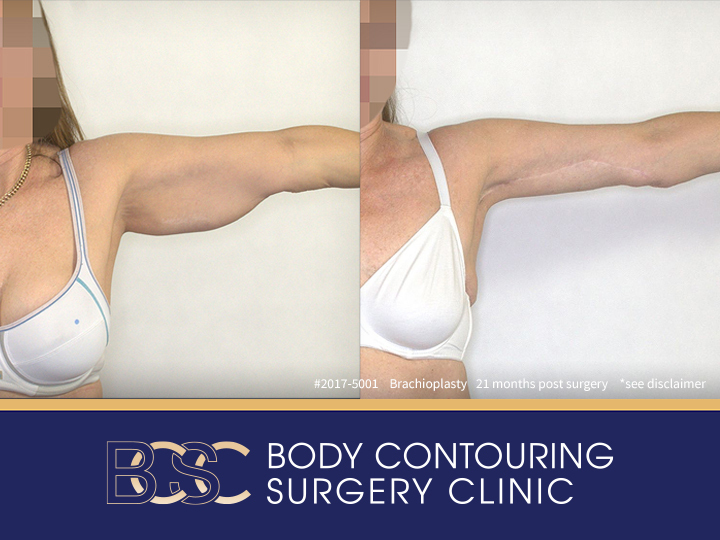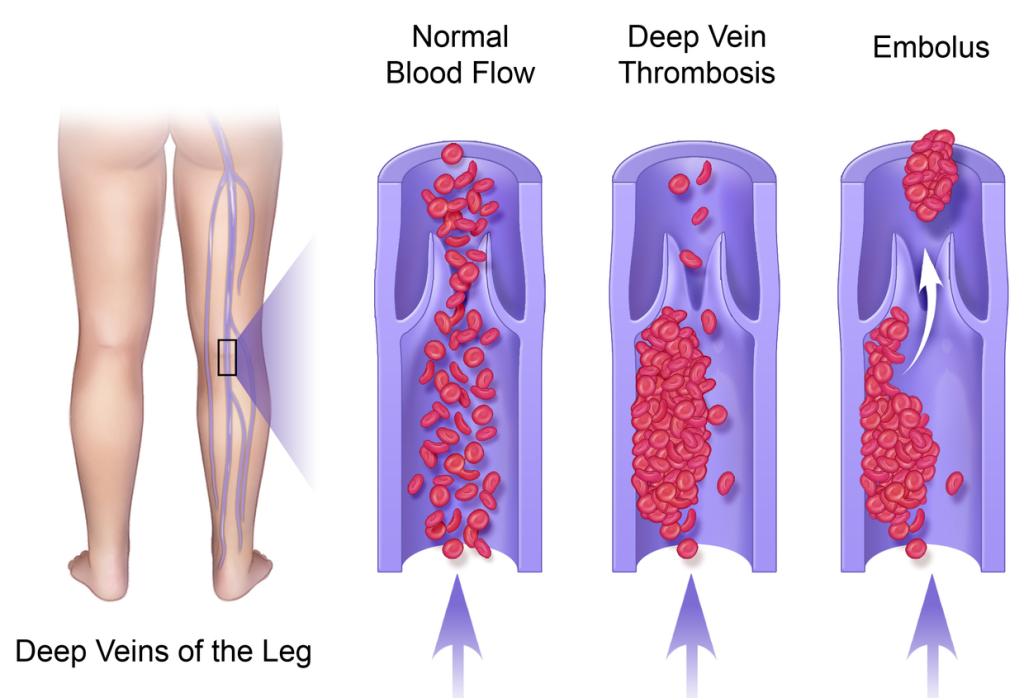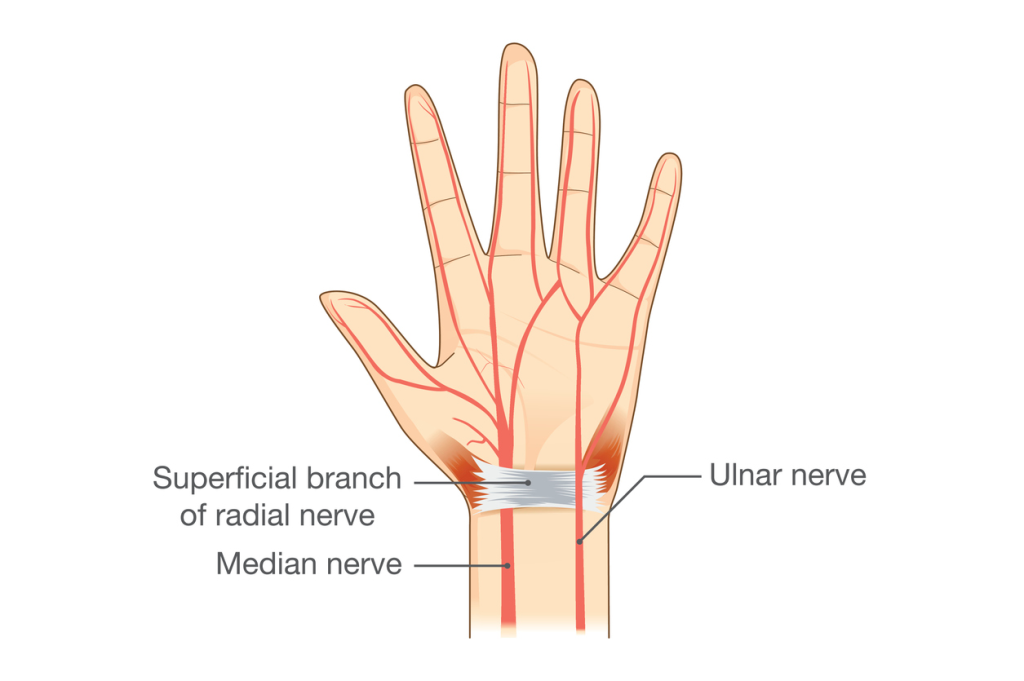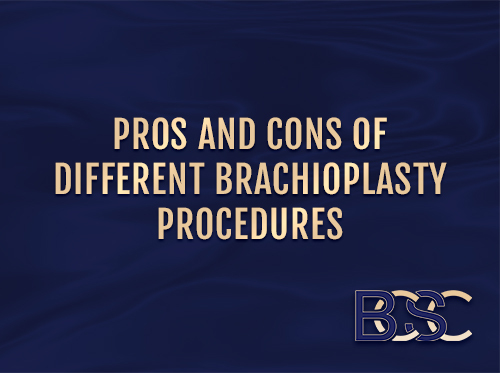Brachioplasty Complications: What are the Risks of Arm Lift Surgery?
Arm lift surgery (brachioplasty) is a procedure that ** ** skin and fat in the upper arms. It can be a relatively ** procedure when performed by a qualified and properly licensed surgeon. However, risks and complications may occur, even when a highly trained surgeon performs the operation.
In this article, Dr Bernard Beldholm explains the risks of arm lifts in detail. He will also tell you about risk factors and provide tips for a ** surgery and recovery.
A word from Dr Beldholm
Dr Beldholm performs surgery in private accredited hospitals. He works with a licensed anaesthetist and highly trained medical staff. He has honed his surgical techniques over the last 12+ years. With that said, risks and complications are possible, no matter who performs your arm lift surgery. You must be willing to acknowledge that you are aware of the risks by signing a consent form before your operation.
What are the risks of brachioplasty surgery?
The following is an overview of the risks and potential complications associated with arm lift surgery. Some of these risks can occur during general surgery, while others are specific to brachioplasty surgery.
Dr Beldholm will review these risks with you during your consultation. He will also provide a list of risks to you in writing.
Abnormal Scarring

Disclaimer: Adult content, Results vary, seek 2nd opinion, Surgery has risks – See full disclaimer
Arm lift scars are inevitable. There will be a scar left behind anytime a surgeon cuts into the skin. The scar is usually placed on the inner aspect of the upper arm. The exact scar placement may vary. You should always discuss the placement of the incision with your surgeon before your operation.
Usually, the upper arm scar fades over the course of a year. Scar maturation may take longer in some individuals than others.
Most arm lift patients find the scar is an acceptable trade-off to having firmer upper arms. However, abnormal scarring can occasionally occur in a small number of patients. The scar tissue can affect the appearance of the skin and the deeper underlying tissues.

Disclaimer: Adult content, Results vary, seek 2nd opinion, Surgery has risks – See full disclaimer
While Dr Beldholm makes an effort to make a clean, straight suture line as he makes the arm lift incisions, the scar can sometimes be asymmetrical or uneven. The upper arm skin can also sometimes “bunch” due when the incision is closed.
Patients with a family history of poor scar formation are more susceptible to abnormal scarring after an upper arm lift. If you are prone to keloids, hypertrophic scarring, wide or raised scars, please be aware that this is not something your surgeon can control. In other words, if you have had keloid scars or hypertrophic scars in the past, even the most skilled surgeon cannot stop it from happening during an arm lift procedure.
Infection
Infections can be superficial (at the skin surface) or deep. The infection may be localised to the upper arm area, or it may occur in another area such as the chest. Treating an infection after arm lift surgery may require prescription oral antibiotics. If a serious infection occurs, it may require hospitalisation for intravenous antibiotics or a drainage procedure. To ward off infection, Dr Beldholm always administers antibiotics during the surgery. This greatly lowers the risk of infection after an arm lift.
Allergic reactions to medications
Common symptoms of a medicine allergy are usually mild and may include rashes, itching, nausea, or hives. Coughing episodes, fever, swelling, a runny nose, shortness of breath, wheezing, itchy eyes, a ** pulse, a sudden drop in blood pressure, dizziness, seizure, or loss of consciousness are all possible, depending on the medication and the severity of the allergic reaction. Severe allergic reactions can be fatal in some people.
If you have a known allergy to any medications, let your surgeon know. Dr Beldholm can modify your prescribed medications if you have ever had an allergic reaction in the past. That said, an arm lift may require taking medications you might have never taken before. Thus, you may not know you have a medication allergy until you have already had a reaction.
Seek immediate care from your surgeon if your reaction is mild. If you experience trouble breathing, dizziness, loss of consciousness, a seizure, or other life-threatening issues, you may need to head to the nearest hospital emergency room for treatment.
Injury to deeper structures
Any surgery has the potential to unintentionally damage deeper structures, including the nerves, muscles, or blood vessels. An arm lift is no exception. Injuries to deeper structures are rare when performed by an experienced surgeon.
Lung problems

Modern general anaesthetic is much ** than anaesthesia techniques of the past. However, there are some risks to consider. For example, small areas of the lungs may collapse and increase the risk of a chest infection. This may require antibiotic treatment or physiotherapy to correct. Serious lung complications are possible, although they are considered quite rare.
Blood clots

Clots in the legs can form after any surgery. Symptoms may include localised pain and leg swelling. Rarely, part of a clot may break off and ultimately travel to the lungs, causing a potentially fatal complication known as pulmonary embolism. Taking short walks every few hours after the surgery can reduce the chance of developing a clot in the legs.
Sensation changes
Itching, tightness, numbness, tingling, or an exaggerated response to hot or cold temperatures are possible after surgical procedures such as an upper arm lift. Usually, these issues resolve during the healing process. In rare cases, sensation changes may be long-lasting.
Sutures spitting out
An upper arm lift may require placing deep permanent sutures in the upper arms. Occasionally, the sutures may spontaneously poke through the skin. If the sutures become visible or result in irritation, a surgical procedure may be necessary to remove them.
Wound healing issues
Wound dehiscence, necrotic skin, or delayed or poor wound healing, may occur after any surgical procedure. Poor wound healing is especially common in patients that smoke.
Heavy lifting (including picking up young children or carrying heavy bags of groceries) can also cause the incision to split apart or lead to excessive bleeding. While wound dehiscence is not a frequent complication, arm lift patients must avoid unnecessary physical exertion until cleared by their surgeon.
If the wounds are dressed daily, they usually heal well within a few weeks after the procedure. If you notice signs of infection, unusual skin colour changes, seepage, or wound separation, you should contact your surgeon immediately to receive the proper care. Poor wound healing is common complication usually highly treatable, but untreated issues may lead to a major complication.
A painful recovery
Pain after an arm lift can range from mild to moderate. In some cases, it can be quite severe on the first day. Typically, aching and soreness ** gradually over the next few days to weeks but may last longer.
Early in recovery, Dr Beldholm may prescribe pain medications. Pain relievers usually control the discomfort so it is manageable, but they may not erase the pain entirely.
In the first few weeks after an arm lift procedure, it is also common to have intermittent sharp pains at the surgical site. Shooting pains are usually related to the nerves healing after surgery. Within three months, most patients feel back to normal. Yet chronic pain ranging from mild aches to sharp nerve pain may persist for one year or longer in some cases.
If you have increasing pain or pain that is unresponsive to medication, bring this to your surgeon’s attention immediately. It could indicate that a complication is developing. The sooner you seek treatment, the better. Waiting for postoperative complications to resolve on their own is never a good idea.
Bruising and swelling

Bruising and swelling are a normal response to having surgery. After an arm lift, the upper arms can be extremely swollen. The hands may look and feel like boxing gloves due to the swelling. Dr Beldholm may ask you to wear a compression garment to minimise swelling. Most of the swelling should resolve in the first few weeks to months. If you notice sudden increased swelling or late-stage bruises as you recover from surgery, contact your surgeon, as this could signal a deeper problem.
Seroma
Seroma refers to excessive fluid accumulation between the skin and underlying tissues. Treating fluid accumulation may require a drainage procedure. Sometimes, a diagnostic imaging procedure, like an MRI, may be needed to detect seroma.
Ulnar nerve injury

An arm lift requires your surgeon to operate on the upper arms and may, in rare cases, affect the ulnar nerve. The ulnar nerve is a motor nerve that helps to move the muscle. If damaged, the patient may have impaired mobility of their arms. While rare, it is one of the potential complications you should be aware of.
Skin irregularities
Skin contour irregularities after an arm lift may include depressions, excess skin pleating, or bunching at the incision line due to excess skin. Some bunching is normal during the first few weeks due to the initial swelling. However, bunching or contour irregularities can remain long after a patient has healed. Another potential issue is dog ears, a ‘pucker’ of loose skin or fatty tissue at the tail end of the incision lines, which may require a revision procedure to correct.
Asymmetry
In nature, people’s arms are rarely identical. Your dominant arm may be slightly larger than your non-dominant arm. Similarly, your upper arms may not be identical after an arm lift. Dr Beldholm makes an effort to remove a similar amount of excess skin and fat from each arm, but the upper arms may not be exactly alike after the operation. They should look comparable, but it is virtually impossible to make both arms identical. Asymmetry is usually mild and unnoticeable.
Excessive bleeding
Bleeding may occur after the surgery. Excessive or uncontrolled bleeding may require an emergency medical treatment such as a blood transfusion.
Risk Factors for Complications
Complications associated with brachioplasty are more likely to occur in some patients than others. Here is a ** summary of some issues that can make arm lift surgery more risky than it needs to be.
Smoking

Being a smoker greatly increases the chance of brachioplasty complications. (Source) Patients that continue smoking before or after an arm lift are more likely to have issues healing. Nicotine has been linked to wound problems, blood clotting issues, and delayed recovery. Therefore, you will need to abstain from nicotine use before and after the brachioplasty procedure.
Why smoking and surgery is a bad combination
Research shows that arm lift patients who smoke have a higher risk of blood clots forming in the legs compared to non-smokers. Blood clots may travel to the lungs and cause serious health issues such as pulmonary embolism, which can be fatal. A pulmonary embolism refers to a part of a clot getting stuck in an artery in the lungs, blocking the normal flow of blood. Warning signs of pulmonary embolism include shortness of breath, sharp chest pain, lightheadedness, coughing up blood, etc.
Being a smoker also means that less oxygen reaches the surgical wound. Oxygen is essential for healing after any surgery, including an arm lift. Without enough oxygen, the arm lift wound may heal slower and become prone to infection. (Source)
Finally, smokers have an increased risk for respiratory and cardiovascular events during and after surgery. Nicotine use can cause the lungs and heart to work harder. Heart attacks and pneumonia are more likely to affect smokers versus those who do not smoke.
What ABOUT e-cigarettes?
Tobacco contains tar, nicotine, and other chemicals that can make healing difficult after an arm lift. You already know you should not use cigarettes, cigars, or chewing tobacco before and after arm lift surgery, but what about e-cigs? Like cigarettes, smokeless products may contain harmful chemical additives. Most e-cig brands also contain nicotine, an addictive substance linked to surgical risks and complications.
Pre-existing medical conditions
Patients with pre-existing health issues like diabetes, respiratory disease, cardiovascular problems, or immunodeficiency have a higher chance of something going wrong, both during the operation and in recovery. Dr Beldholm will review your medical history with you during your consultation. By pre-screening for risk factors, he avoids putting patients in unnecessary danger. He may decline performing brachioplasty surgery if you have an underlying illness that can make it too unsafe to operate.
Obesity
While an arm lift can remove excess fat, it is not a weight loss solution. Nor is it a cure for obesity. Obese patients are not great candidates for an arm lift since they tend to have more frequent complications. (Source) If you are considering an arm lift after significant weight loss, you should only have the operation after maintaing a healthy, stable weight for six months or longer.
Failing to follow pre- and post-operative instructions
Brachioplasty risks are higher in patients that do not follow their surgeon’s and anaesthetist’s instructions leading up to the operation and as they recover from arm lift surgery. Dr Beldholm’s office provides each patient with detailed instructions to prepare for surgery and explain what precautions to take when they return home to begin healing. For example, heavy lifting and strenuous exercise must be avoided for several weeks. Dr Beldholm will also instruct you to wear a compression garment.
Patients must also maintain a steady weight after the surgery. Committing to a healthy lifestyle is important if you want your arm lift results to last a long time. Future weight gain and subsequent massive weight loss, can cause brachial ptosis to return.
Combining multiple procedures
After bariatric procedures, many weight loss patients have ** skin on several body parts. The amount of loose ** skin and excess fat depends on the amount of weight lost. Many women also develop loose skin on their abdomen, excess fat, or ** breasts after pregnancy or breastfeeding.
These types of patients may be considering more than one body contouring procedure to remove loose skin. While it may be possible to combine certain procedures in one patient, it is usually ** to space the operations a few months apart.
Having concomitant procedures performed to ** skin laxity on the same day may increase the likelihood that something will go wrong. (Source) While some body contouring surgeries (such as VASER liposuction and a tummy tuck) may be able to take place during one operation, it is wise to avoid booking several extensive procedures on the same day.
For example, a breast lift (mastopexy) and breast implant surgery (breast augmentation) may need to be performed separately. As another example, a major surgical procedure such as a lower body lift surgery (belt lipectomy) should not take place at the same time as plastic surgery such as an arm lift or thigh lift surgery.
Spacing these procedures a few months apart is a ** way to go about it. Otherwise, you may risk a third procedure and higher complication rate. Issues that can occur include poor wound healing, fluid accumulation, delayed healing, etc.
Travelling abroad for surgery
Finally, travelling for aesthetic or plastic surgery can be risky for several reasons. If you have ever googled botched cosmetic surgery or plastic surgery gone wrong, you may notice a trend. Often, these botched procedures happen in countries that are not known for offering high standards of medical care.
Many patients are willing to travel for elective body contouring surgery because they are interested in saving money on the procedure. A bargain price could mean the surgeon is less experienced, unlicensed, or offering to perform body contouring surgery in an unsafe facility.
Some patients also gamble with their health by travelling great distances for plastic or cosmetic surgery, and then going home too soon afterwards. After brachioplasty other reconstructive surgery, you will need to attend follow-up appointments with your surgeon. This can be difficult if your surgeron is far away. If a problem arises and you are thousands of miles from your surgeon, they may not be able to help you. That could mean ending up in a hospital emergency room or frantically searching for a local body contouring specialist who can help. Obviously, if you have a complication and aren’t feeling well, that would be difficult.
The bottom line is you should only have arm lift aesthetic plastic surgery performed in a location you can easily access. And if you do need to travel for cosmetic surgery or plastic surgery, plan to stay in the area for several weeks or until your surgeon clears you to return home.
This isn’t about bashing aesthetic specialists in other nations. The truth is, complications can occur no matter what surgeon performs the cosmetic surgery, regardless of their locale. It is simply riskier to travel abroad for the reasons mentioned.
Preparing for Arm Lift Surgery
Many patients wonder what to do before an arm lift procedure. Preparation is the first step to success. Dr Beldholm takes the guesswork out of it by providing a written list of pre-operative instructions. You will need to follow his instructions closely. Doing so will set you up for a safer surgery. If you have any questions about your pre-operative instructions, you are welcome to contact Dr Beldholm and his staff at any time. He does not charge for additional consultations.
Adjusting medications and dietary supplements
Preparing for arm lift surgery may require you to adjust certain medications (both over-the-counter and prescriptions) starting ten to 14 days before arm lift surgery. Some examples of medications to avoid include blood thinners and NSAIDs. Patients must also avoid certain dietary supplements and vitamins (especially Vitamin E, an ingredient often found in daily multivitamins). Failing to do so may increase the chance of bleeding.
Fasting before general anaesthetic
Dr Beldholm’s anaesthetist will give you a call to let you know what to eat and drink before you go under general anaesthesia. You may need to fast for a few hours or avoid drinking water on the morning of your operation. Follow these instructions carefully to avoid surgical complications.
Find a chauffeur to drive you
Finally, you will need someone to drive you home from the hospital. It is not safe to drive after arm lift surgery. Initially, you will be too groggy from the effects of general anesthesia, making it difficult to drive defensively. Arm swelling and soreness are usually worst in the first few days to weeks, again making it unsafe to get behind the wheel.
Most of Dr Beldholm’s patients are cleared to drive one to two weeks after arm lift surgery. In the meantime, you will need a trusted adult to chaffeur you around. You will also need to ask your driver to bring you to Dr Beldholm’s office for follow-up appointments after your arm lift surgery.
Quitting smoking before surgery
Medical literature shows that after quitting the habit for four weeks, cellular inflammatory functions appear normal, but the proliferative function, a key step in wound healing, remains impaired. (Source) Obviously, this can spell trouble for a person recovering from an arm lift. The surgery is safest for people who do not smoke. If you are a smoker, you should quit smoking at least several weeks to months before your operation. The sooner you quit tobacco, the better.
How often do complications occur?
Serious brachioplasty risks are rare. Let’s take a closer look at the complication rates.
Major Complication Rates for Brachioplasty Surgery
A large study examined 2,294 arm lift patients. (Source) The statistical analysis showed that major complications occurred in roughly three percent of all arm lift patients in the study. Infection (1.7%) was the most common serious issue. Potential complications such as nerve damage after the surgery were less frequent. Patients that had multiple body contouring procedures in one day had a slightly higher complication rate at just over four percent.
Minor Complication Rates for Brachioplasty Surgery
Another medical paper looked at 27 studies from the mid 1990s to 2015. (Source) The extracted data showed that a minor complication is more likely to occur than a serious one. The most frequent common complications that were minor included hypertrophic scarring, seroma and haematoma.
Is brachioplasty ** ?
If you are bothered by brachial ptosis (** skin on the upper arms) due to massive weight loss or ageing, you may be a candidate for arm lift surgery – a surgical procedure that removes loose skin from the arms.
While brachioplasty outcomes are usually good, no surgeon can guarantee with 100 percent certainty that nothing will go wrong during or after the procedure. It is practically unheard of for a plastic surgeon anywhere to claim a zero complication rate. Unexpected problems can come up even if a patient chooses the most skilled plastic surgeon in the world.
The most common potential complications are minor and easily treated. Serious complications can occur, but the likelihood is relatively low.
To give yourself the highest chance of ** surgery and recovery, choose a qualified specialist surgeon that operates in a properly licensed medical facility. Ask questions about the surgical techniques they plan to use. Be sure to follow all of your surgeon’s instructions carefully. If something goes wrong after your procedure, do not hesitate to contact your surgeon or healthcare provider.
What if something goes wrong?
If you think you are experiencing complications associated with upper arm lift surgery, reach out to Dr Beldholm’s office immediately. It is better to be safe than sorry. Waiting too long to get the care you need can cause minor complications to turn into major health issues.
As you heal from an arm lift, you may find it helpful to keep an aesthetic surgery journal so you can monitor any changes that you notice day by day. Doing so can help you more easily keep track of what symptoms you are experiencing rather than relying on your memory alone. If any issues arise, you can share your aesthetic surgery journal with your surgeon. Taking detailed notes may also make it easier for your surgeon to diagnose postoperative complications.
Dr Bernard Beldholm, FRACS, is dedicated to providing aftercare to his arm lift patients for 12 months after their operation. He is equipped to manage minor or major complications. If a life-treating medical emergency arises, he may instruct you to go to the hospital. Smaller and less serious complications can usually be managed in his office. Your health and ** are truly his top priority.
If I have a complication, will I be responsible for the cost of additional medical procedures?
Dr Beldholm’s surgeon fee includes performing the brachioplasty operation. Twelve months of routine follow-up appointments are included in the price. However, if a complication necessitates an additional medical procedure, this is usually billed separately. Charges may include a secondary surgeon fee, operating theatre fee, hospital fees, etc. Lab tests and diagnostic testing may cost extra.
Learn more about arm lift risks and complications from Dr Bernard Beldholm
Dr Bernard Beldholm, FRACS, is committed to patient **. If you are considering an arm lift in Newcastle, call his office or book online. He can explain what to expect before, during, and after arm lift surgery. He will also provide in-depth information about the possible risks so you can make a better-informed decision about your health and appearance.



